Table of Contents
Kabul city, the vibrant and historical heart of Afghanistan, and the proud capital of this diverse and culturally rich nation. If you are asking what is the capital of Afghanistan, you now know that Kabul holds a significant place in the country’s history, politics, and cultural tapestry. Nestled amidst the rugged peaks of the Hindu Kush mountains, Kabul serves as a bustling metropolis that beautifully blends the traditions of the past with the aspirations of the future. With its strategic location, Kabul in Afghanistan has been a pivotal center of commerce, culture, and governance for centuries, making it a city of immense importance in the region.
As the largest city in Afghanistan, Kabul is a melting pot of ethnicities, languages, and traditions, making it a microcosm of the nation’s diverse identity. From the ancient bazaars that evoke memories of the Silk Road to the modern developments that speak of progress, Kabul stands as a testament to the resilience of its people through the turbulent times of history.
Kabul Quick facts

- Geographic Location: Kabul is situated in eastern Afghanistan, in the Kabul River Valley, surrounded by the Hindu Kush mountain range.
- Population: With a population of approximately 5 million people, Kabul is the largest city in Afghanistan and serves as its political, cultural, and economic center.
- Historical Significance: The city has a long history, dating back over 3,500 years, and has served as an important center along the Silk Road trade route.
- Weather: Kabul experiences a continental climate with hot summers and cold winters, with temperatures often dropping below freezing during winter nights.
- Languages: The main languages spoken in Kabul are Dari and Pashto, both of which are official languages of Afghanistan.
- Education: Kabul is home to several prominent universities and educational institutions, including Kabul University, which was founded in 1932.
- Infrastructure: Under the Taliban government, the city has witnessed extensive development in recent years, with new roads, buildings, and infrastructure projects contributing to its urban growth.
Wazir Akbar Khan Hill – North Side
Kabul pictures with views from the Northern side of Kabul city.
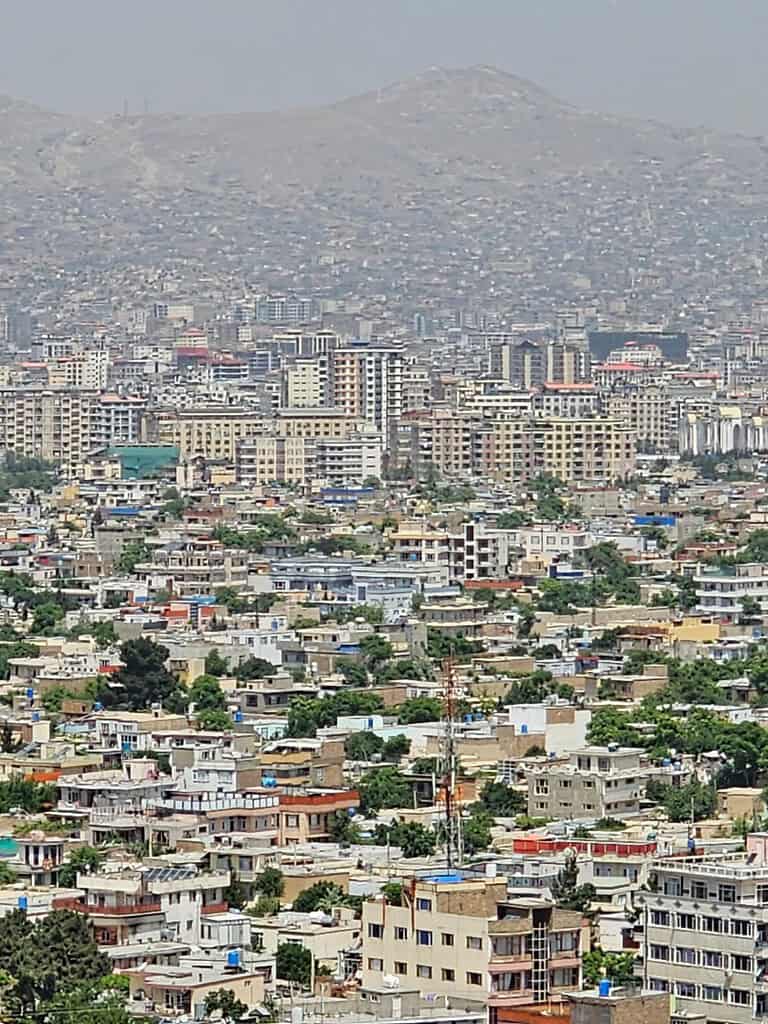
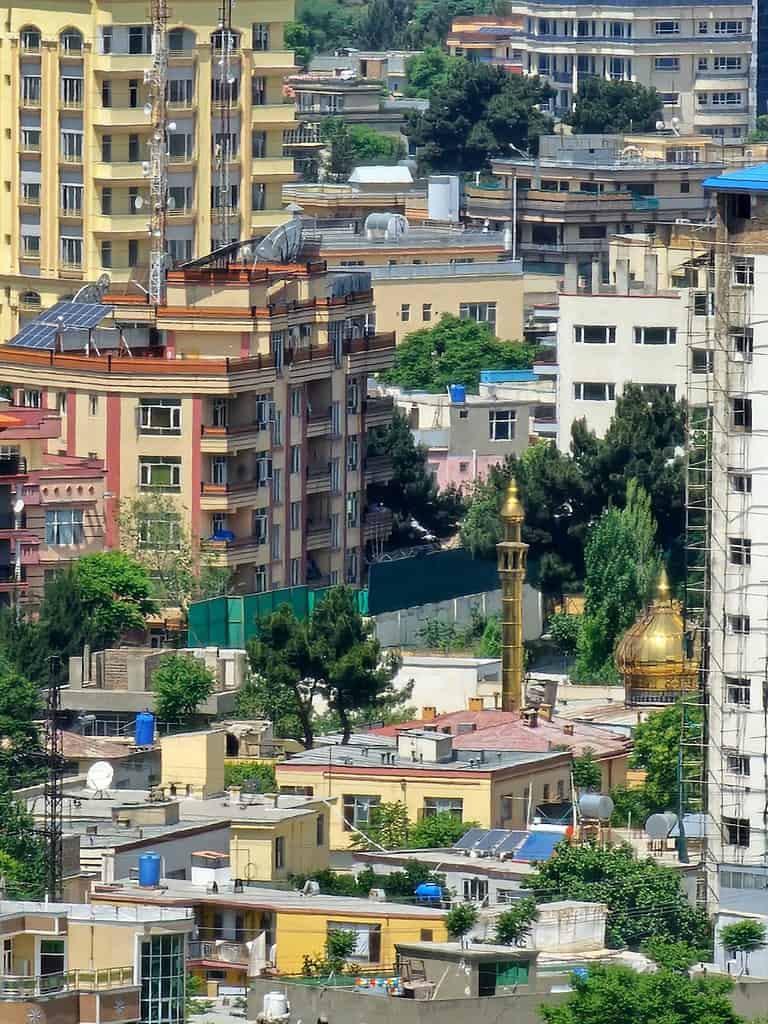





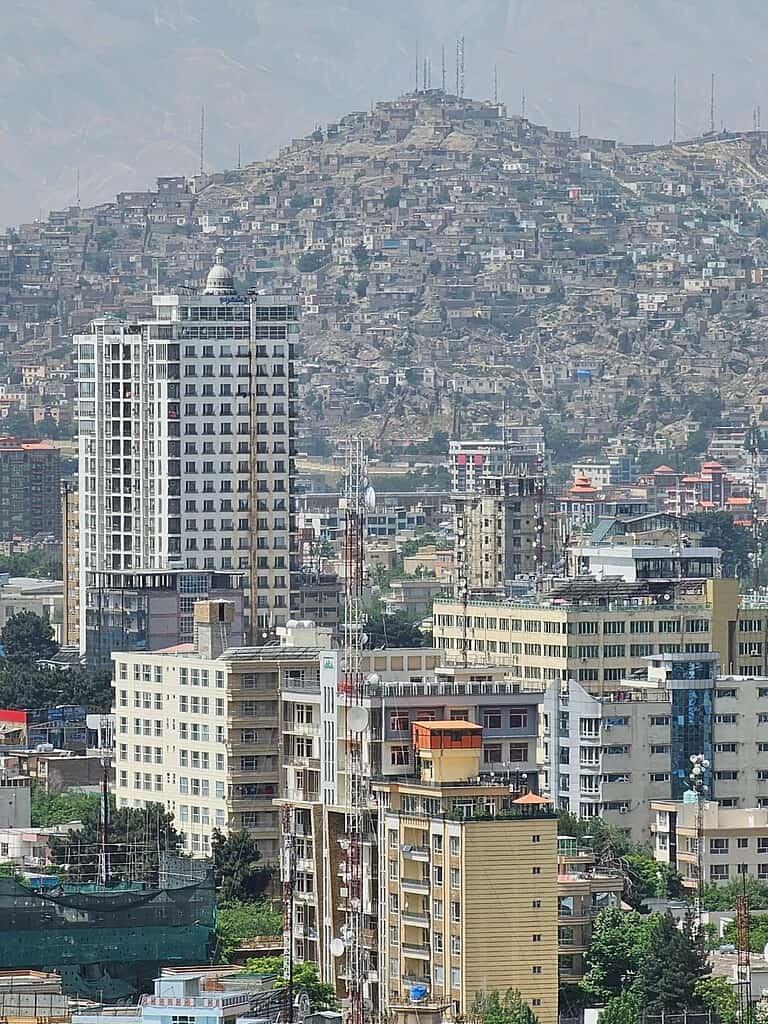

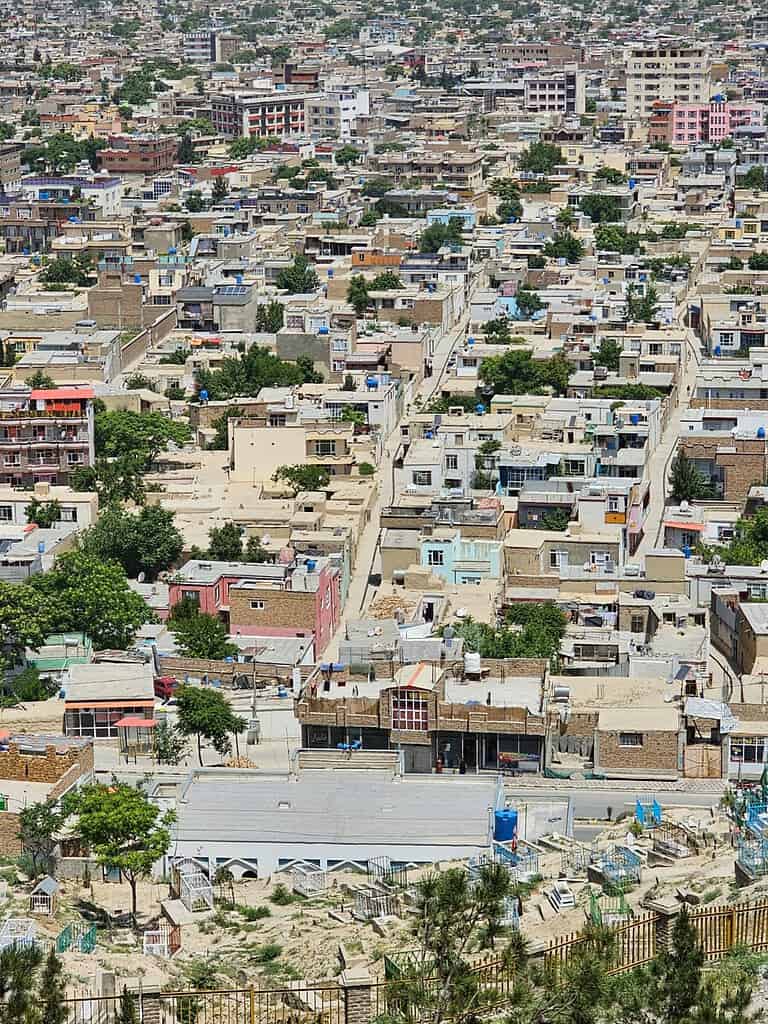
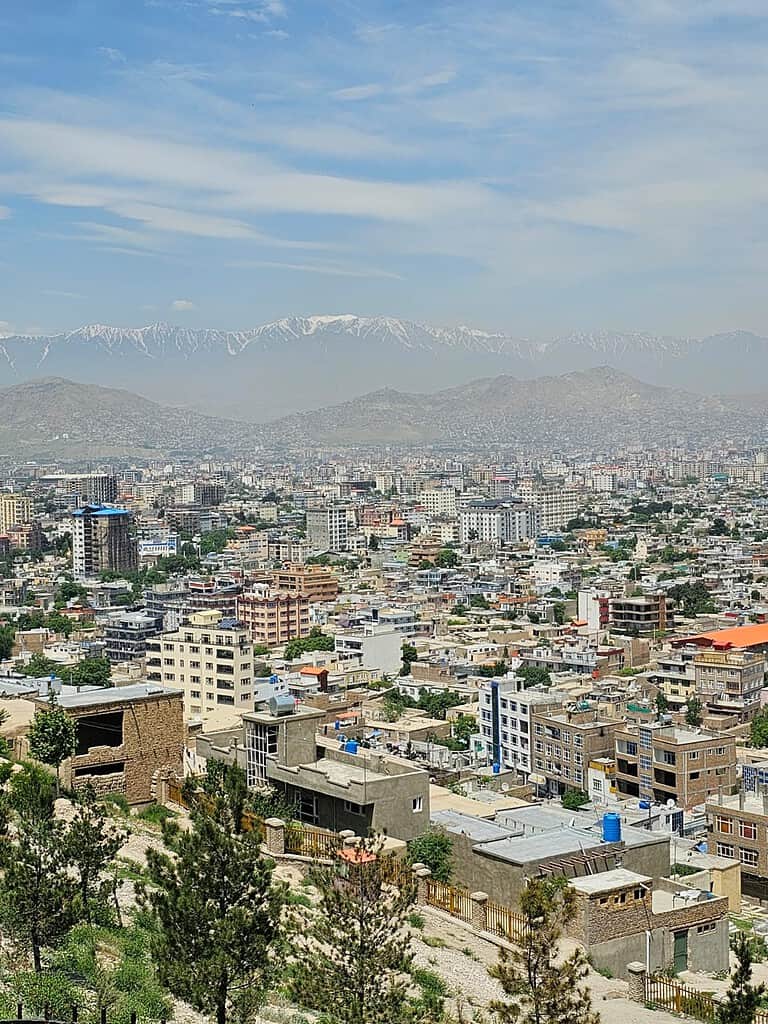





Wazir Akbar Khan Hill – South Side
Kabul pictures with views from the Southern side of Kabul city.

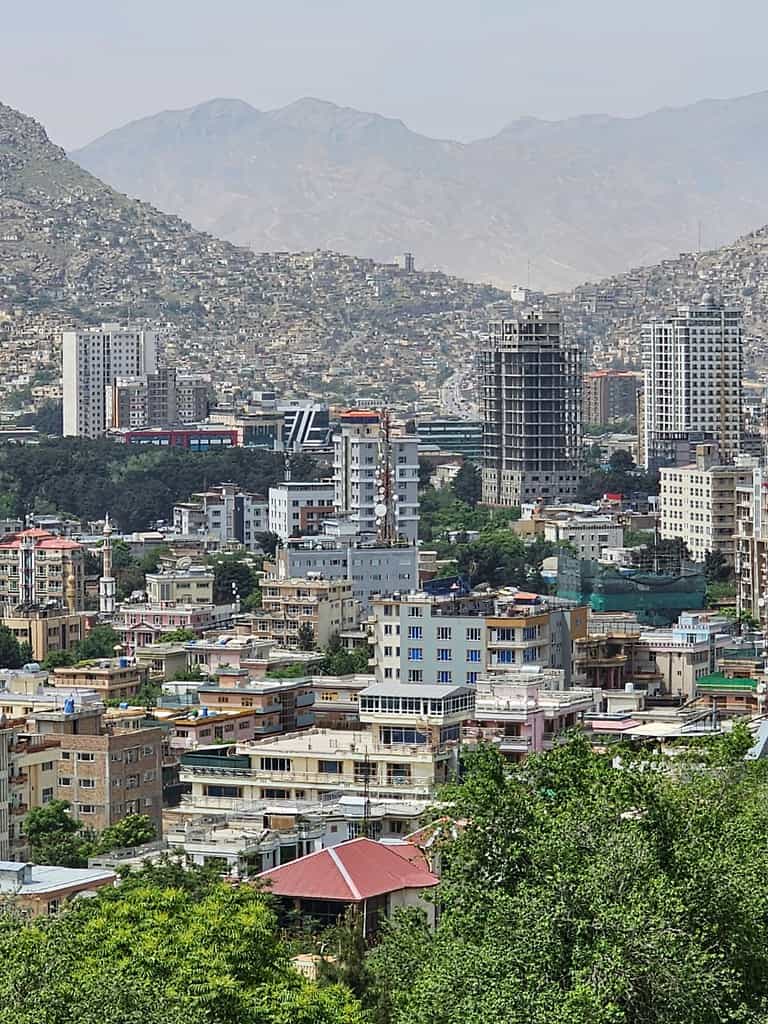

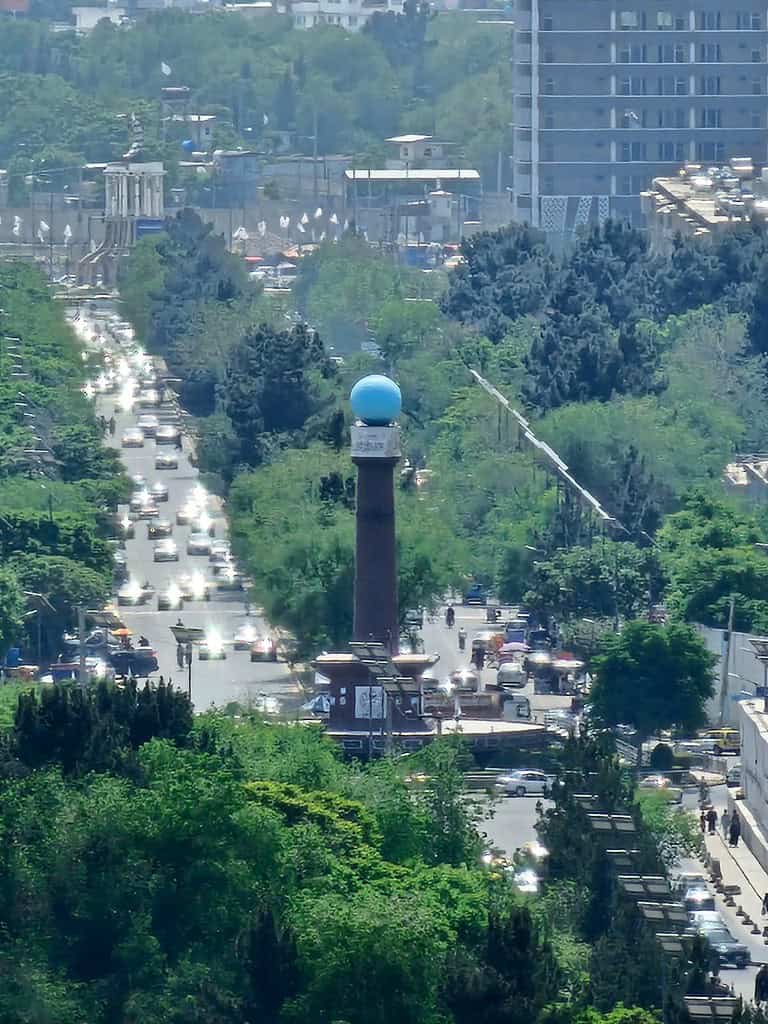


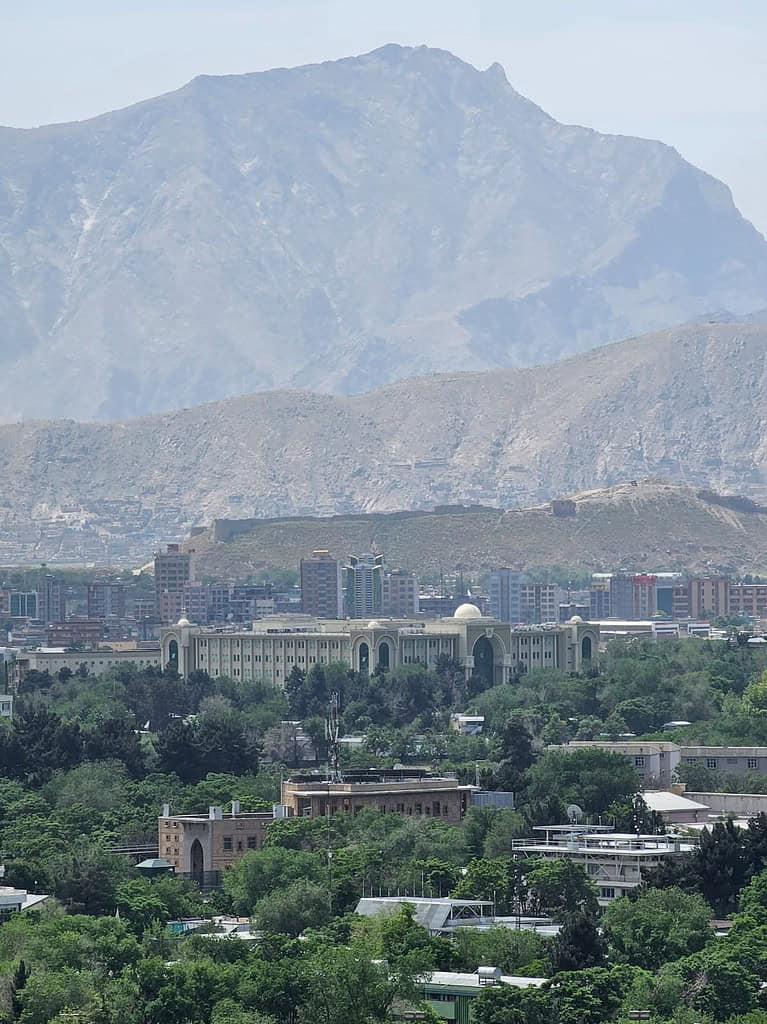
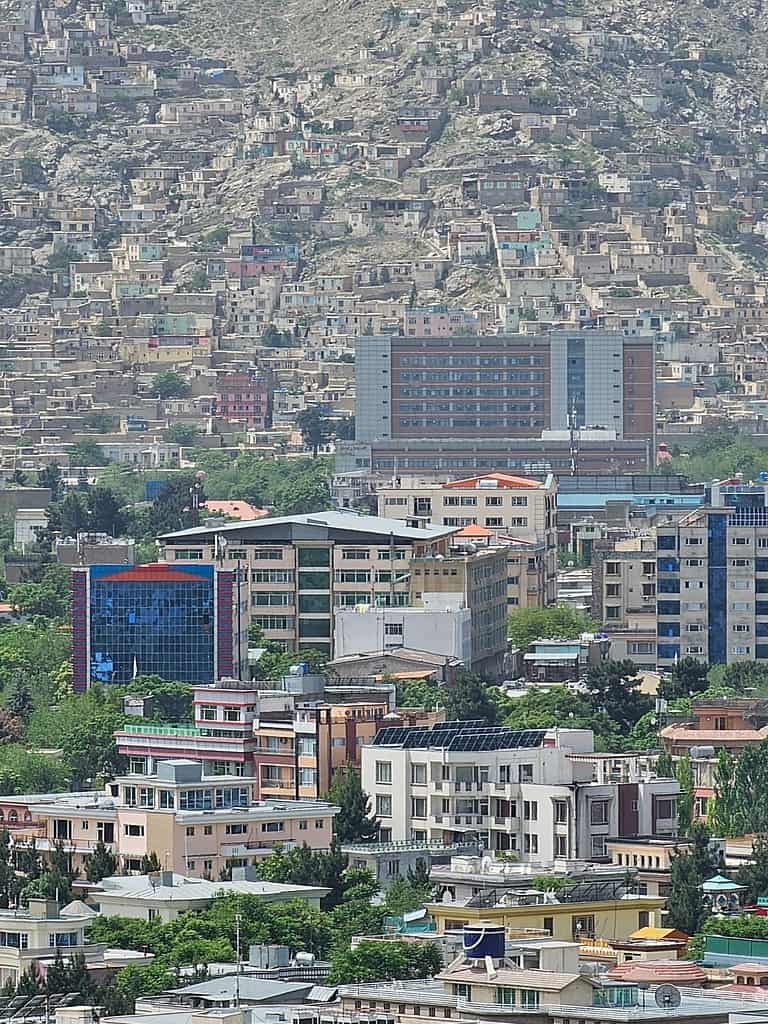





Throughout the years, Kabul has witnessed the rise and fall of empires, including the Mauryan, Kushan, and Ghaznavid dynasties, each leaving an indelible mark on the city’s architecture and cultural heritage. Today, the city is home to a mix of ancient landmarks, such as the imposing Babur’s Gardens, the majestic Darul Aman Palace, and the iconic National Museum, which together narrate the stories of Afghanistan’s past.
As Afghanistan capital city, Kabul plays a crucial role in the nation’s contemporary affairs, hosting the government’s administrative institutions, embassies, and international organizations. Amidst the evolving political landscape, the city strives to foster stability and development, welcoming foreign investment and cooperation while preserving its unique identity and cultural legacy.
Kabul’s charm lies in its ability to embrace modernity without forsaking its rich heritage. Amidst the bustling streets and lively markets, one can find the warmth and hospitality of its people, who continue to weave the threads of tradition into the fabric of progress. From the serene beauty of the Bagh-e Bala Park to the vibrant energy of the Kabul River, the city offers a kaleidoscope of experiences to its residents and visitors alike.
As Kabul continues to write its next chapter, it stands as a city of resilience, courage, and hope, embodying the spirit of a nation that looks forward to a brighter future while cherishing its cherished past. Join us on a journey through the alleys and boulevards of Kabul, and discover the captivating blend of old and new that makes it an extraordinary capital of Afghanistan.
Sakhi Shrine in Kabul City
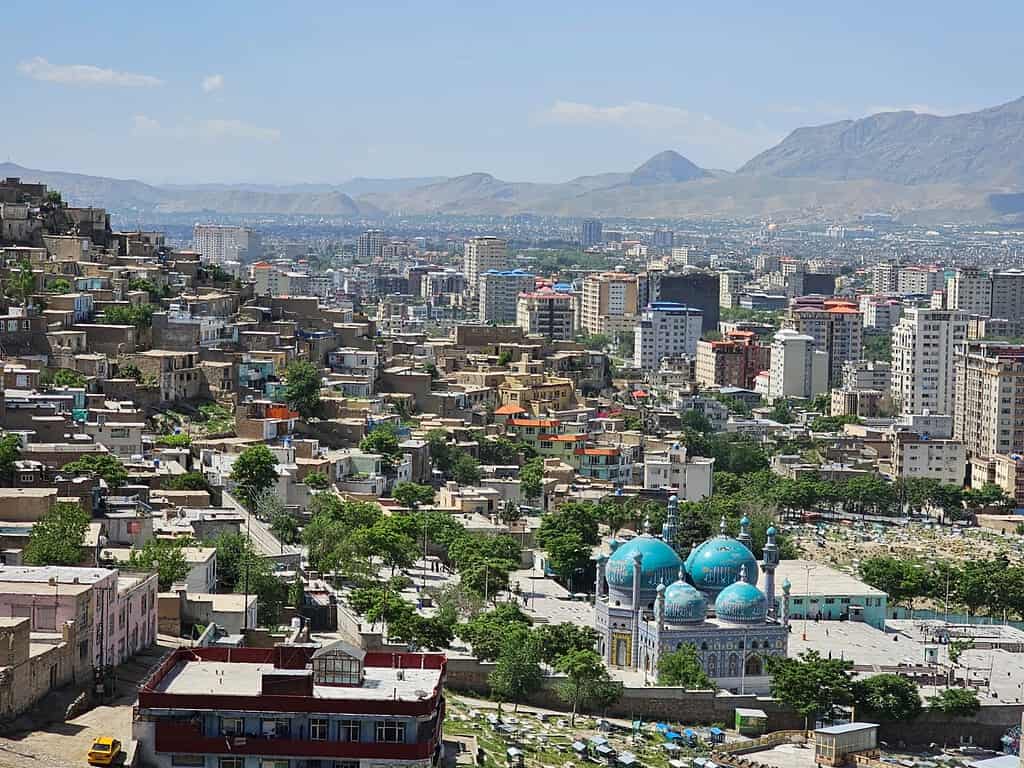
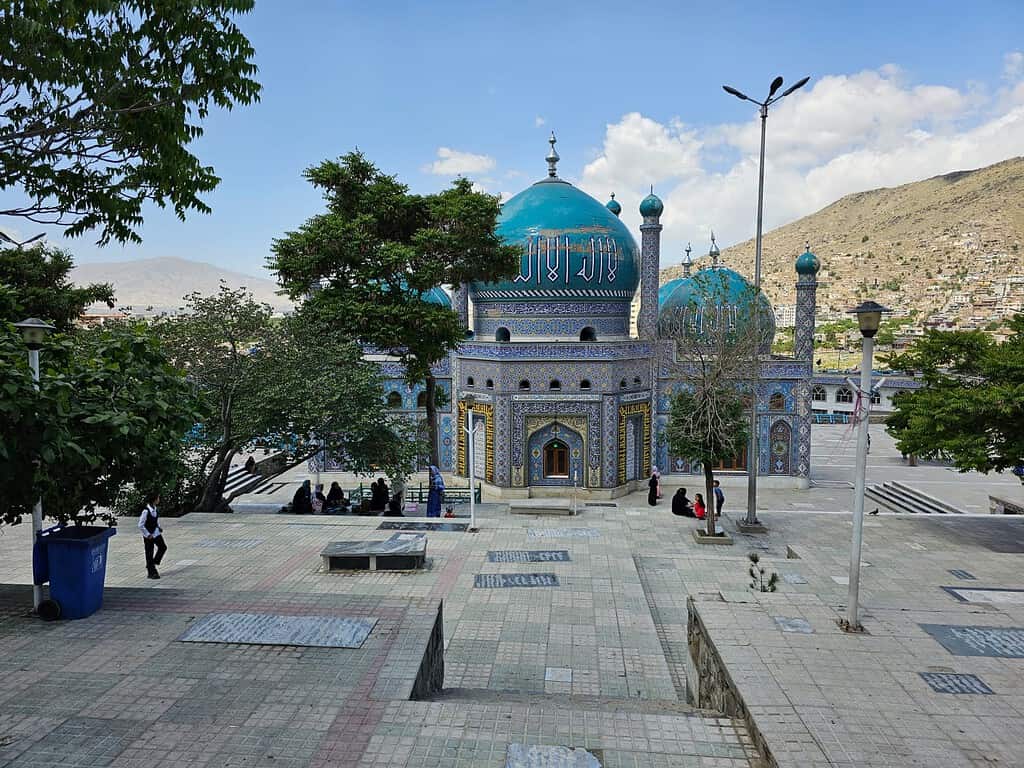

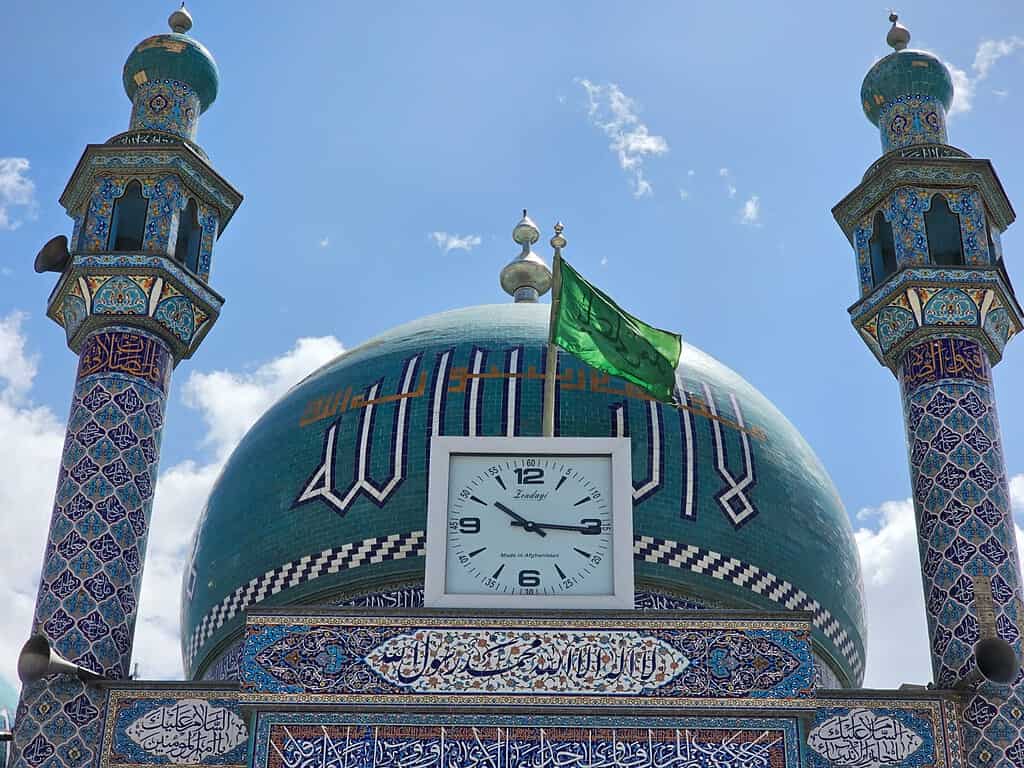
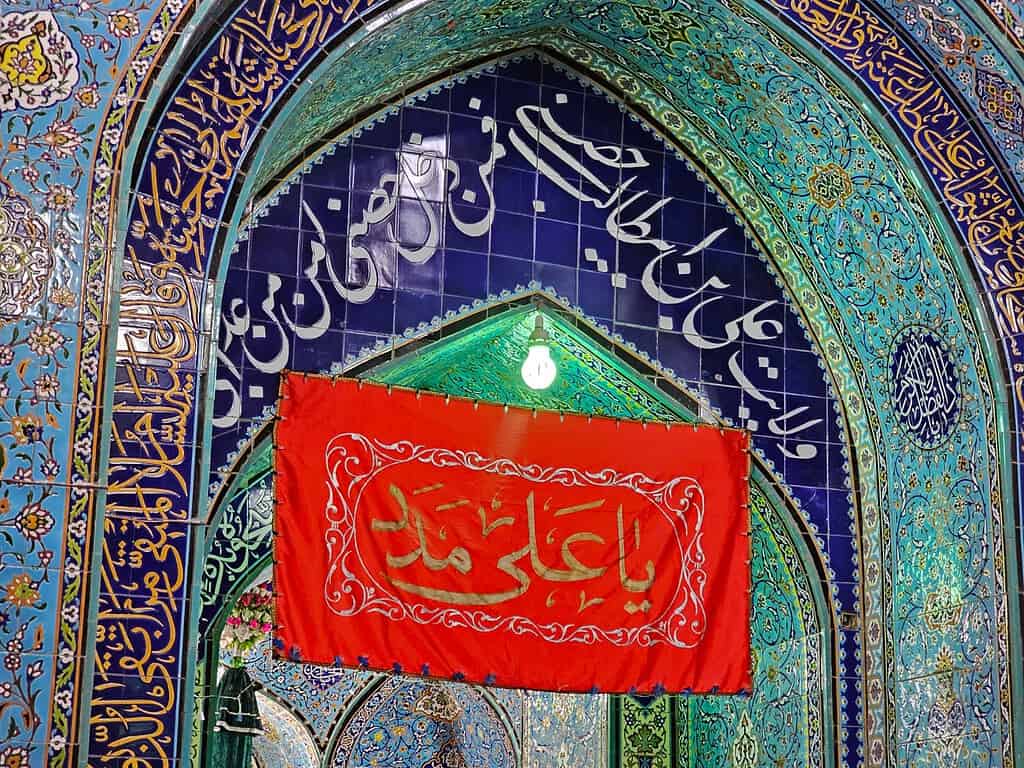

Kabul – Capital of Afghanistan
Timeline of Kabul’s history, highlighting the most important events over the last 2000 years, including the Taliban’s takeover of Kabul after the completion of the USA invasion, the subsequent loss in the war, and the eventual retreat from the country.
- 4th century BCE: Kabul (known as Kapisa/Kapisagira) emerges as a city in the Achaemenid Empire.
- 1st century BCE: Kabul becomes an important city under the rule of the Indo-Greek Kingdom.
- 5th century CE: The Hephthalite Huns establish their capital near modern-day Bagram, close to Kabul.
- 9th century: Kabul becomes a prominent city during the rule of the Samanid Empire.
- 977: Ghazni serves as the capital of the Ghaznavid Dynasty.
- 12th century: Ghor becomes the capital during the Ghorid Dynasty.
- 13th century: Kabul serves as a regional capital under Mongol rule after the Mongol invasion.
- 1504: Kabul is used as a base by Babur, the founder of the Mughal Empire, for his campaigns in India.
- 1747: Kandahar becomes the capital of the Durrani Empire, founded by Ahmad Shah Durrani.
- 1776: Kabul regains its status as the capital under the Durrani rulers.
- 1839: Peshawar is temporarily designated as the capital by the Barakzai rulers.
- 1842: Kabul resumes its position as the capital after the return of the Barakzai rulers.
- 1863: Herat serves as a regional capital and cultural center under the rule of Dost Mohammad Khan.
- 1880: Kandahar is briefly the capital during periods of instability.
- 1926: Kabul remains the capital during the reigns of King Amanullah Khan, King Nadir Shah, and King Zahir Shah.
- 1979: Kabul experiences political instability and is occupied by Soviet forces.
- 1996: During the Afghan civil war, Kabul falls to the Taliban, and the city becomes their de facto capital.
- 2001: Following the US-led invasion of Afghanistan in response to the September 11 attacks, Kabul became the capital of the newly established Afghan Transitional Authority.
- 2001: The Taliban lose control of Kabul, and the city becomes the capital under the new interim government.
- 2021: After the withdrawal of US troops from Afghanistan, the Taliban rapidly regain control of the country, leading to the fall of Kabul to the Taliban.
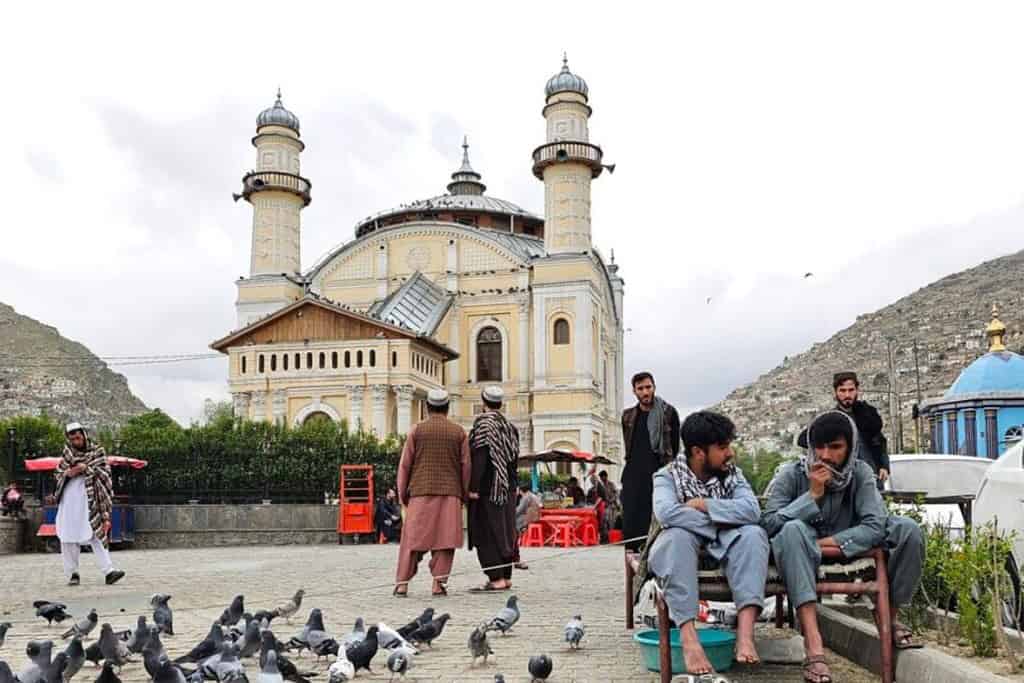
Afghanistan Capital
170 facts and curiosities about Kabul, the capital of Afghanistan, covering a wide range of interests:
- Kabul is the capital and largest city of Afghanistan.
- The city’s history dates back over 3,500 years, making it one of the oldest cities in the world.
- Kabul has been an important center of trade, culture, and learning for centuries.
- The city’s name “Kabul” is derived from the Sanskrit word “Kubhā,” meaning water or well.
- Kabul is surrounded by mountains, including the Hindu Kush range, providing stunning natural scenery.
- The city has a continental climate, with hot summers and cold winters.
- It is known for its vibrant bazaars where a variety of goods are traded.
- Kabul served as a key stop on the historic Silk Road, facilitating trade between East and West.
- The Bala Hissar fortress is an ancient defensive structure in Kabul, dating back to the 5th century.
- Kabul was once described by the famous 13th-century traveler Marco Polo as a “very great and noble city.”
- The city has experienced various invasions, including by Alexander the Great in 330 BCE.
- The Mausoleum of Babur, the founder of the Mughal Empire, is located in Kabul and is a UNESCO World Heritage Site.
- During the 19th century, Kabul was known as the “City of Gardens” due to its lush greenery.
- The historic Darul Aman Palace, built in the early 20th century, is an iconic landmark in Kabul.
- Kabul University, founded in 1932, is one of the oldest and most prestigious universities in Afghanistan.
- The National Museum of Afghanistan houses valuable artifacts from the region’s rich history.
- The Bagh-e Babur (Babur’s Garden) is a beautiful garden complex in Kabul, dating back to the 16th century.
- Kabul has witnessed significant modernization and infrastructure development in recent decades.
- The city’s population is a diverse mix of ethnic groups, including Pashtuns, Tajiks, Hazaras, Uzbeks, and others.
- The national sport of Afghanistan is Buzkashi, a traditional horseback competition involving a goat carcass.
- The famous poet Rumi lived in Kabul during the 13th century.
- Kabul’s currency is the Afghani (AFN).
- The famous Shar-e-Naw Park is a popular recreational spot for locals and visitors alike.
- The city has a growing art scene, with many local artists expressing their creativity through various forms.
- The Kabul River flows through the city and is a vital water source for the area.
- Kabul was an important center for Sufi mysticism during the medieval period.
- The city’s architecture showcases a blend of traditional Afghan and modern influences.
- Kabul has faced significant challenges due to decades of conflict and war.
- The Pul-e Khishti Mosque, built in the 17th century, is a significant religious site in Kabul.
- The city’s traditional cuisine includes dishes like kebabs, mantu, and aushak.
- The ancient city of Istalif, known for its pottery, is located just north of Kabul.
- Kabul’s street markets are vibrant and colorful, offering a wide range of products and produce.
- The city has a rich musical heritage, with traditional Afghan instruments like the rubab and tabla being popular.
- Kabul has been featured in various literary works and historical accounts throughout history.
- The city’s famous Paghman Gardens have been a popular destination for picnics and relaxation for centuries.
- The Kabul Zoo is one of the oldest zoos in South Asia, housing a diverse range of animals.
- The city’s traditional clothing varies among different ethnic groups, each having its distinctive style.
- Kabul’s ancient walls and gates bear witness to its long history as a fortified city.
- The ancient Kabul Museum was once known as the Museum of Afghan National Heritage.
- The Kabul Golf Club, established in the 1960s, is one of the world’s highest golf courses.
- The city has been a cultural melting pot, with influences from Persia, Central Asia, and the Indian subcontinent.
- The Ghazi Stadium, built in the 1920s, has been a venue for sports events and public gatherings.
- Kabul has witnessed significant urbanization and population growth in recent decades.
- The city’s carpets and rugs are renowned for their intricate designs and craftsmanship.
- The Kabul River Gorge, also known as Tang-e Gharu, offers breathtaking views of the surrounding landscape.
- Kabul’s street food scene offers a variety of delicious snacks and local delicacies.
- The city’s street art showcases the creativity and resilience of its people.
- The tomb of the 11th-century Sufi poet and philosopher Al-Hallaj is a revered pilgrimage site for Sufis.
- Kabul’s Old City, with its narrow alleys and historic buildings, reflects the city’s ancient past.
- The city’s public transportation includes buses and shared taxis known as “sawaris.”
- The Qargha Lake, located on the outskirts of Kabul, is a popular spot for recreational activities.
- The Pul-e Khishti Mosque is renowned for its blue-tiled facade and intricate Islamic geometric patterns.
- The city’s street markets offer a wide array of colorful spices, dried fruits, and nuts.
- The National Gallery of Afghanistan showcases contemporary Afghan art and cultural exhibits.
- Kabul’s local festivals and celebrations offer a glimpse into the city’s cultural heritage.
- Continuing from point 55:
- Kabul’s local festivals and celebrations offer a glimpse into the city’s cultural heritage.
- Eid al-Fitr and Eid al-Adha are celebrated with great enthusiasm and are among the most significant Islamic festivals in Kabul.
- Nowruz, the Persian New Year, is widely celebrated in Kabul and marks the beginning of spring.
- Jeshyn-Afghan, Afghanistan’s Independence Day on August 19th, is a national holiday celebrated with parades and events in Kabul.
- Afghan Independence Day coincides with the anniversary of the Anglo-Afghan Treaty of 1919, which granted full independence to Afghanistan.
- National Unity Day on February 28th commemorates the end of the civil war between the Taliban and the Northern Alliance in 1997.
- The International Women’s Day on March 8th is recognized in Kabul, highlighting the role and achievements of Afghan women.
- Farmers’ Day celebrates the contributions of farmers and agricultural workers to the country’s economy and food security.
- Mawlid al-Nabi, the birthday of the Islamic prophet Muhammad, is observed with religious and cultural activities in Kabul.
- Cultural festivals, such as the Afghan Film Festival and the Kabul International Music Festival, promote arts and creativity in the city.
- The annual Kabul Book Fair brings together local and international publishers, authors, and book lovers.
- The Silk Road Festival in Kabul showcases the city’s historical connection to the ancient trade route.
- The traditional kite-flying festival called “Gudiparan Bazi” is a joyous event celebrated by both children and adults in Kabul.
- Afghan traditional music and dance performances are held during various festivals, preserving the country’s artistic heritage.
- Kabul Fashion Week showcases the work of local fashion designers and models, reflecting contemporary Afghan fashion trends.
- The Festival of Sacrifice (Eid al-Adha) is marked by the sacrifice of livestock and the distribution of meat to the less fortunate.
- Ramadan, the holy month of fasting, is observed with religious fervor, and the breaking of fast is celebrated with family and friends.
- The Kabul International Trade Fair promotes business and commerce, attracting participants from Afghanistan and beyond.
- The National Day of Remembrance for Martyrs and Disabled is observed in Kabul, honoring those who sacrificed their lives for the country.
- The Buzkashi tournaments, a traditional horseback sport, are held in Kabul, drawing large crowds to witness this thrilling game.
- The Feast of the Sacrifice (Eid-e-Qurban) is a significant event celebrated with prayers and community gatherings.
- Nawruz, the Persian New Year, is heralded with elaborate decorations and festivities throughout Kabul.
- Local crafts and handmade goods are showcased during the Kabul Craftsmen’s Fair, promoting Afghan craftsmanship.
- Jeshyn-Afghan is marked with cultural events, including music, dance, and traditional performances, reflecting national pride.
- Kabul’s theaters and cultural centers host performances of traditional Afghan plays and contemporary productions.
- Independence Day is celebrated with flag-raising ceremonies and speeches, fostering a sense of patriotism among Kabul’s residents.
- The International Day of Peace is observed in Kabul with events aimed at promoting peace and reconciliation in the region.
- The Kabul International Puppet Festival entertains both children and adults with captivating puppet shows from different cultures.
- Afghan weddings, with their vibrant traditions and customs, are celebrated with grand festivities and communal feasting in Kabul.
- The Kabul Biennale showcases contemporary art from Afghanistan and other countries, fostering cultural exchange and dialogue.
- The National Handicrafts Exhibition in Kabul features traditional crafts, allowing artisans to display and sell their handmade creations.
- The Nauroz Cup, a football tournament, brings together local teams and fans, creating a festive atmosphere in Kabul.
- Kabul’s street markets are adorned with colorful decorations during various festivals, adding to the city’s festive spirit.
- The Festival of Fire (Chaharshanbe Suri) is celebrated in Kabul on the eve of the last Wednesday before Nowruz, involving firework displays and bonfires.
- Local storytelling and poetry gatherings, known as “Mushaira,” showcase the rich oral traditions of Kabul and Afghanistan.
- The National Theatre of Afghanistan in Kabul hosts performances, including classical plays, modern dramas, and musicals.
- The Festival of Lights (Diwali), celebrated by the Hindu community in Kabul, illuminates the city with lamps and candles.
- The International Day of Nowruz is observed in Kabul, recognizing the cultural significance of the Persian New Year.
- The festival of Shab-e-Yalda, also known as the winter solstice, is celebrated with family gatherings and festive meals in Kabul.
- The Kabul Winter Festival features various winter sports and activities, allowing residents to enjoy the colder months.
- The Festival of Colors (Holi), celebrated by the Hindu community, is marked by vibrant color-throwing celebrations in Kabul.
- The Kabul Film Festival showcases local and international films, promoting Afghan cinema and storytelling.
- Cultural exchange events, such as the Kabul International Dance Festival, embrace diverse dance styles and traditions.
- Religious festivals, such as Ashura and Mawlid al-Nabi, are marked by processions, prayers, and acts of charity in Kabul.
- The Flower Festival in Kabul displays a variety of beautiful flowers, representing the city’s horticultural heritage.
- The Kabul International Food Festival celebrates Afghan cuisine, offering a delicious array of traditional dishes and delicacies from different regions of Afghanistan.
- These are just some of the many festivals and celebrations that make Kabul a vibrant and culturally rich city, reflecting the diversity and heritage of Afghanistan.
- The Battle of Kabul in 1776 marked the defeat of the Persian army by Ahmad Shah Durrani, the founder of modern Afghanistan.
- In 1839, Kabul witnessed the infamous “Massacre of Elphinstone’s Army” during the First Anglo-Afghan War, resulting in a devastating loss for the British forces.
- During the Second Anglo-Afghan War, Kabul fell to the British again in 1879 after the Battle of Charasiab.
- In 1880, Ayub Khan led the Battle of Maiwand against the British forces near Kabul, resulting in a significant defeat for the British.
- In 1919, after the Third Anglo-Afghan War, Afghanistan regained full independence from British influence, and Kabul celebrated its liberation.
- The Soviet Union invaded Afghanistan in 1979, leading to a decade-long conflict known as the Soviet-Afghan War, with Kabul being a major battleground.
- Kabul witnessed intense fighting during the Afghan Civil War in the 1990s, following the withdrawal of Soviet forces.
- In 1996, the Taliban captured Kabul and established their rule, imposing strict Islamic law.
- During the Taliban’s rule, they infamously destroyed the ancient Buddhas of Bamiyan, which were UNESCO World Heritage Sites.
- In 2001, following the September 11 attacks, the USA launched the War in Afghanistan, leading to the ousting of the Taliban regime in Kabul.
- After the USA-led invasion, the Bonn Agreement in 2001 established an interim administration in Kabul, leading to the establishment of the Islamic Republic of Afghanistan.
- The 2003 loya jirga (grand assembly) held in Kabul adopted Afghanistan’s new constitution, paving the way for democratic governance.
- The Kabul-Kandahar Highway, a vital transportation route, was rebuilt with the help of international partners to improve connectivity in Afghanistan.
- The Kabul International Airport serves as a major air hub connecting Kabul with the rest of the world.
- The Intercontinental Hotel in Kabul has been a target of several terrorist attacks throughout its history.
- The Aga Khan Trust for Culture has been involved in restoring and preserving historic buildings and monuments in Kabul, including the Chihilsitoon Palace.
- The Bagh-e Zanana, or Women’s Garden, in Kabul is a popular recreational spot for women and families.
- The National Islamic Movement of Afghanistan, a prominent resistance group during the Soviet-Afghan War, was founded in Kabul.
- The Asian Development Bank has funded several projects in Kabul, focusing on urban development and infrastructure.
- The Babur Gardens, also known as Bagh-e Wazir Akbar Khan, were laid out in the 16th century and offer stunning views of Kabul.
- The French Cultural Center in Kabul promotes French language and culture through various programs and events.
- The famous Chicken Street (Sarak-e Murgha) in Kabul is known for its antique shops and handicraft vendors.
- The Russian Cultural Center in Kabul fosters cultural exchange and cooperation between Afghanistan and Russia.
- The Republic of Korea has contributed to various development projects in Kabul, including in the fields of health and education.
- The Turquoise Mountain Institute for Afghan Arts and Architecture works to revive traditional Afghan crafts and skills in Kabul.
- The Kabul Serena Hotel is a luxury hotel and a popular destination for diplomats and international visitors.
- The National Art Gallery of Afghanistan in Kabul exhibits traditional and contemporary Afghan art collections.
- The French Medical Institute for Mothers and Children (FMIC) in Kabul provides specialized medical care and training.
- The National Olympic Committee of Afghanistan is headquartered in Kabul and promotes sports and athletic development in the country.
- The Wazir Akbar Khan neighborhood in Kabul is known for its embassies and diplomatic missions.
- The Afghan Academy of Sciences in Kabul supports research and scientific advancement in Afghanistan.
- The Kabul Military Training Center (KMTC) plays a crucial role in training Afghan security forces.
- The National Environmental Protection Agency (NEPA) in Kabul oversees environmental conservation and policies.
- The National Museum of Afghanistan in Kabul houses rare artifacts, including the famous “Gold Crown of Begram.”
- The Indira Gandhi Children’s Hospital in Kabul provides medical care to children and mothers.
- The National Archives of Afghanistan preserves historical documents and manuscripts in Kabul.
- The World Bank has supported various development projects in Kabul to improve infrastructure and services.
- The Ali Abad Teaching Hospital in Kabul offers medical education and healthcare services.
- The Turquoise Mountain Institute for Historic Preservation works to restore and conserve historic buildings in Kabul.
- The Afghanistan Institute for Strategic Studies in Kabul conducts research and analysis on security and geopolitical issues.
- The Kabul Riverfront Development Project aims to revitalize the city’s riverfront area with recreational spaces and parks.
- The Kabul Military Hospital is a major medical facility catering to the needs of the Afghan armed forces.
- The Daoud Khan Military Hospital provides medical care to military personnel and civilians in Kabul.
- The French Medical Institute for Children in Kabul specializes in pediatric healthcare and training.
- The Zarnegar Park in Kabul offers a peaceful oasis for relaxation and picnics.
- The Emergency Hospital in Kabul provides specialized medical care to victims of conflict and trauma.
- The Afghanistan National Institute of Music in Kabul promotes music education and cultural preservation.
- The Zarghoona Ana High School for Girls in Kabul is one of the oldest and most prestigious girls’ schools in Afghanistan.
- The Marefat High School in Kabul is renowned for promoting progressive education and cultural tolerance.
- The National Training Center in Kabul offers vocational training programs to enhance job skills and employment opportunities.
- The international community has been cautious in recognizing the Taliban’s rule in Kabul.
- The Taliban has imposed a strict curfew in Kabul, limiting movement during certain hours of the day. Violators can face severe consequences.
- The Taliban has taken control of the banking and finance sector in Kabul. They enforce their own rules and regulations on monetary transactions and impose penalties for non-compliance.
- The Taliban has established control over healthcare facilities in Kabul.
- Traditional celebrations and festivities, such as the Afghan New Year (Nowruz), are discouraged or outright banned in Kabul by the Taliban.
- The Taliban maintains a strong surveillance system in Kabul, with informants reporting on any perceived violations of their rules.
- The Taliban enforces a strict interpretation of Islamic law in Kabul.
- The Chinese firm Xinjiang Central Asia Petroleum and Gas Company (CAPEIC), a subsidiary of the state-owned China National Petroleum Company (CNPC), signed a 25-year-long, multimillion-dollar contract to extract oil from the Amu Darya basin in Afghanistan. The deal aimed to invest $150 million in the first year and $540 million over the next three years. The Taliban agreed to be a 20 percent partner in the deal, which would later be extended to 75 percent.
- The Taliban has engaged in negotiations with China to resume previous mining and oil contracts settled in 2008 and 2011.
- The Taliban announced its intention to use Chabahar port in Iran to import wheat from India as humanitarian assistance to Afghanistan. India had previously invested $85 million to connect Chabahar port with Afghanistan and Central Asia, making it a strategic transport corridor.
- The Kabul municipal government embarked on various infrastructure development projects in the city. The projects included planting trees on median strips, erecting traffic-circle monuments, and building major roads from scratch. The projected total cost for these projects was approximately $90 million.
- The Taliban planned to build major roads and improve connectivity between regions within Afghanistan. For example, in Dasht-i-Barchi, a district in Kabul, a connecting road to a major highway was under construction.
- The Taliban expressed interest in completing pending development projects with international partners, including India. Officials from Da Afghanistan Bank (DAB) approached the Indian embassy in Kabul, seeking technical support in October 2022.
- The Taliban engaged with Central Asian countries, including Uzbekistan, to include them in the International North-South Transport Corridor (INSTC). The INSTC is a multi-modal transportation agreement connecting the Indian Ocean and the Persian Gulf to the Caspian Sea and Europe.
- The Taliban removed blast walls from around showy mansions in affluent areas of Kabul and initiated road grading and paving in previously closed streets. The aim was to improve public spaces and enhance the city’s appearance.
- The Taliban expressed intentions to rebuild and renovate selected areas and corridors in Kabul, which displayed the scars of civil conflict and foreign invasion.
More About Afghanistan
[the-post-grid id=”45730″ title=”Afghanistan Main page”]
